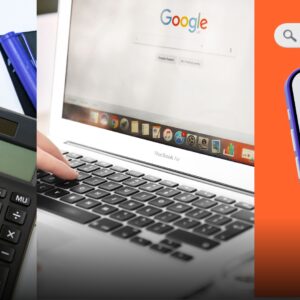Imagine opening an email that feels like it was written just for you: it addresses your specific needs, recommends products you’re already eyeing, and arrives at the perfect moment. This is hyper-personalization, the future of email marketing in 2025. Gone are the days of generic “Dear Customer” blasts. Today, brands use AI, data, and automation to craft emails that resonate deeply, driving engagement and conversions like never before.
Email remains a powerhouse in digital marketing, with a return on investment (ROI) of $42 for every $1 spent. Hyper-personalization takes this to the next level, boosting open rates by 29% and click-through rates by 41% compared to standard emails. This blog explores how to master hyper-personalization for next-level email campaigns, covering strategies, tools, real-world examples, challenges, and future trends. Whether you’re a small business owner, a marketing newbie, or a seasoned pro, here’s your guide to creating email campaigns that truly connect in 2025.
What is Hyper-Personalization Email Campaigns?
Hyper-personalization goes beyond adding a first name to an email. It uses advanced data analytics, AI, and real-time insights to deliver highly tailored content that aligns with each recipient’s preferences, behaviors, and context. Think of it as a one-to-one conversation at scale—every email feels uniquely relevant.
Unlike traditional personalization (e.g., “Hi Sarah”), hyper-personalization leverages:
- Behavioral Data: Browsing history, purchase patterns, or email interactions.
- Contextual Data: Location, time of day, or device used.
- Predictive Analytics: AI forecasts what a customer might want next.
- Dynamic Content: Emails adapt in real time based on user actions.
Example: A fitness brand sends you an email with a workout plan tailored to your recent gym shoe purchase, including local class recommendations and a discount on protein shakes—all timed for your usual evening workout. This level of relevance drives a 50% higher conversion rate than generic emails.
Why Hyper-Personalization Matters in 2025
Email inboxes are crowded, with consumers receiving 120 emails daily on average. Standing out requires precision. Hyper-personalization email campaigns deliver:
- Higher Engagement: Personalized emails see 26% higher open rates and 14% better click-through rates, per Campaign Monitor.
- Increased Conversions: Dynamic content boosts purchase likelihood by 20%, per Gartner.
- Customer Loyalty: 80% of consumers prefer brands that offer personalized experiences, per Epsilon.
- Cost Efficiency: Automation reduces manual effort, letting small teams achieve big results.
Stat: In 2025, 75% of marketers using hyper-personalization report a 10–30% revenue lift, per Forrester.
Key Strategies for Hyper-Personalization Email Campaigns
Mastering hyper-personalization requires a blend of data, technology, and creativity. Here’s how to elevate your email campaigns in 2025:
Leverage Rich Customer Data
The foundation of hyper-personalization is data. Collect and analyze:
- First-Party Data: Customer profiles, purchase history, and website interactions.
- Zero-Party Data: Preferences shared via quizzes or surveys (e.g., “What’s your fitness goal?”).
- Third-Party Data: External insights like demographic trends, if compliant with privacy laws.
Example: A skincare brand uses a quiz to learn a customer’s skin type and concerns, then sends emails with product recommendations tailored to dry skin and anti-aging needs.
Tip: Use Customer Relationship Management (CRM) tools like Salesforce or HubSpot to centralize data for a 360-degree customer view.
Segment Audiences Dynamically
Static segments (e.g., “new subscribers”) are outdated. Dynamic segmentation groups users based on real-time behavior:
- Behavioral Segments: Cart abandoners, frequent browsers, or loyal buyers.
- Lifecycle Segments: New leads, active customers, or lapsed users.
- Contextual Segments: Users in specific locations or time zones.
Case Study: Netflix segments users by viewing habits, sending emails like “More Sci-Fi Thrillers for You” with tailored show suggestions. This drives a 15% increase in streaming hours.
Use AI and Predictive Analytics
AI transforms hyper-personalization by predicting customer needs:
- Product Recommendations: Algorithms suggest items based on past purchases or browsing.
- Send-Time Optimization: AI determines the best time to send emails for each user.
- Churn Prevention: Predictive models identify at-risk customers, triggering re-engagement emails.
Example: Amazon’s “Customers Also Bought” emails use AI to recommend complementary products, boosting average order value by 25%.
Tools: Platforms like Klaviyo or Marketo integrate AI for predictive personalization.
Implement Dynamic Content
Dynamic content adapts emails in real time based on user data:
- Personalized Subject Lines: “Sarah, Your Yoga Gear is 20% Off Today!”
- Tailored Images: Show winter coats to users in cold regions, swimsuits to those in warm climates.
- Conditional Blocks: Display different offers based on user behavior (e.g., a discount for cart abandoners).
Stat: Emails with dynamic content see 22% higher click-through rates, per Experian.
Automate Triggered Emails
Automated emails, triggered by user actions, deliver timely, relevant messages:
- Welcome Series: Onboard new subscribers with tailored tips or offers.
- Cart Abandonment: Remind users about items left behind with a discount.
- Post-Purchase: Suggest complementary products or request reviews.
- Re-Engagement: Win back inactive users with personalized incentives.
Example: A pet store sends a “Welcome, Max!” email to new dog owners, including a guide to puppy care and a coupon for toys. This results in a 30% first-purchase rate.
Tool: Mailchimp’s automation features make triggered emails easy to set up.
Craft Compelling Storytelling
Hyper-personalization isn’t just data—it’s about human connection. Use storytelling to make emails resonate:
- Customer-Centric Narratives: Share how your product solves their specific pain points.
- User-Generated Content: Feature customer stories or reviews.
- Emotional Triggers: Highlight values like sustainability or community that align with their interests.
Example: Patagonia’s emails share stories of eco-conscious customers using their gear, paired with personalized product suggestions, driving a 10% sales lift.
Technologies Powering Hyper-Personalization
Several technologies enable hyper-personalized email campaigns in 2025:
- AI and Machine Learning: AI analyzes data to predict preferences and optimize content.
- Marketing Automation Platforms: Tools like ActiveCampaign or Pardot streamline workflows.
- Customer Data Platforms (CDPs): Segment and unify data for seamless personalization.
- Dynamic Content Engines: Platforms like Dynamic Yield render real-time email variations.
- 5G Connectivity: Faster networks support rich media like personalized videos in emails.
Stat: 65% of marketers using AI-driven personalization see a 20%+ improvement in campaign performance, per Adobe.
Challenges and Solutions
Hyper-personalization comes with hurdles, but solutions keep campaigns on track:
- Data Privacy: GDPR and CCPA require consent for data use. Solution: Be transparent, use opt-in forms, and prioritize zero-party data.
- Data Silos: Fragmented data hinders personalization. Solution: Integrate systems with a CDP like Segment.
- Over-Personalization: Too much tailoring can feel intrusive. Solution: Balance personalization with general content and test user comfort levels.
- Resource Intensity: Hyper-personalization requires expertise. Solution: Start small with automation tools and scale as you learn.
Tip: Conduct A/B tests to find the sweet spot between personalization and privacy.
Future Trends in Hyper-Personalized Email Campaigns
Hyper-personalization will evolve beyond 2025:
- AI-Generated Content: Tools like Jasper AI will draft fully personalized emails, with human oversight for authenticity.
- Real-Time Contextualization: Emails will adapt based on live data, like weather or location, using IoT integration.
- Immersive Media: VR and AR links in emails will let users explore virtual product demos.
- Voice-Activated Emails: Integration with voice assistants will allow users to interact with emails hands-free.
- Ethical Personalization: Brands will prioritize transparency and consent to build trust in a privacy-conscious world.
Projection: By 2027, 90% of email campaigns will use hyper-personalization, per McKinsey.
Getting Started with Hyper-Personalized Email Campaigns
Ready to master hyper-personalization? Follow these steps:
- Audit Your Data: Assess available customer data and identify gaps. Start with first-party data like purchase history.
- Choose a Platform: Select an email tool with personalization features, like Klaviyo or HubSpot.
- Start Simple: Test one personalized element, like dynamic subject lines or product recommendations.
- Segment Strategically: Create 2–3 dynamic segments based on behavior or lifecycle stage.
- Automate Triggers: Set up welcome or cart abandonment emails to save time.
- Measure and Optimize: Track open rates, clicks, and conversions to refine campaigns.
Example: A small bookstore launches a hyper-personalized campaign targeting frequent buyers with emails recommending books based on past purchases, timed for weekend reading. The campaign boosts sales by 18% in a month.
Tool Tip: Try free plans on Mailchimp or SendGrid to experiment with personalization before scaling.
Conclusion
In 2025, mastering hyper-personalization for email campaigns is a game-changer for brands aiming to cut through inbox clutter. By leveraging rich data, AI, dynamic content, and automation, you can create emails that feel like personal conversations, driving 29% higher open rates and 41% better clicks. From small businesses to global brands, hyper-personalized email campaigns build loyalty and boost revenue with unmatched precision. Challenges like privacy and resources exist, but tools and strategies make personalization accessible to all.
Ready to take your email campaigns to the next level? Start with a single personalized touch, measure results, and scale your efforts. What’s your first step toward hyper-personalization in 2025? Share your plans below and let’s spark some ideas! In Bestdigitalmarketingcourseinraipur you will learn all about it and more.







